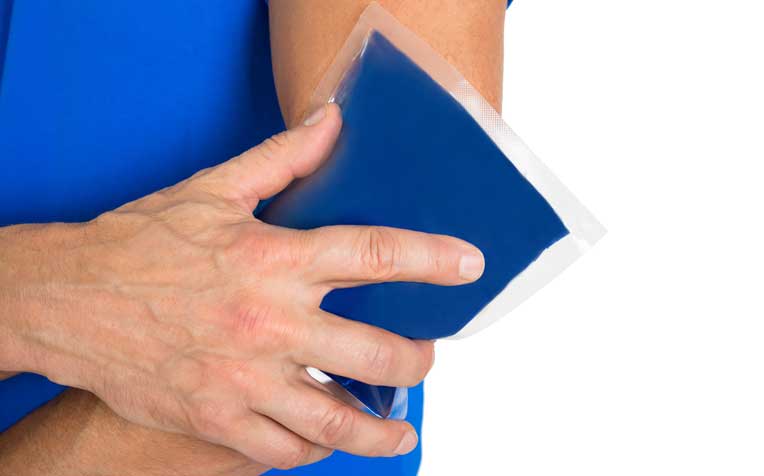
Use ice gel pack on the arm to reduce inflammation and relieve pain.
Tennis elbow known formally as lateral epicondylitis of the elbow, is a common condition in adults in their 40s and 50s.
About 10-15 percent of regular tennis players experience it during their playing careers. However, the condition can occur in any sport or work that requires forceful and/or repetitive forearm usage.
In mild cases, treatment can be as simple as taking a break from the activity to rest the overworked muscles to physiotherapy and steroid injections.
There are various surgical options available, including open excision of the damaged tissue and elbow arthroscopy.
Ultrasound treatment, an alternative to surgery for tennis elbow
A novel procedure using ultrasound waves has been developed to treat tennis elbow and help relieve pain.
“This procedure is really for people who have ‘maxed out’ on every other treatment. We wouldn’t recommend it for someone who’s experienced just three months of symptoms, for instance,” said Dr Joyce Koh, Senior Consultant, Department of Orthopaedic Surgery, Singapore General Hospital (SGH), a member of the SingHealth group.
About 75 per cent of the people who go through the procedure are likely to have undergone other forms of invasive treatments without success. Typically, about 10-20 per cent of patients with tennis elbow go through surgery eventually. The procedure takes less than 20 minutes to perform, and this includes getting the patient and equipment ready. The “energy” time – the actual time spent cutting out the abnormal tissue – lasts only about half a minute, she said.
The technology used is similar to that for eye cataract surgery where ultrasonic energy is focused into a very small area, is very strong, and does not cause much damage to surrounding, healthy tissue. Previously, cataract surgery was complex, performed under general anaesthesia, and often required the patient to stay in hospital for a week to recover. “(Percutaneous ultrasonic tenotomy) uses the same technology for musculoskeletal problems, and that’s why it’s so exciting!” Dr Koh said.
The SGH introduced the minimally invasive procedure in August 2012 after a joint trial between the hospital and the Mayo Clinic of the US to test its efficacy and safety. The Mayo Clinic’s Professor Bernard Morrey came to Singapore to perform the procedure on the first seven patients in June 2011, with another 13 done by SGH doctors in November of the same year. After the trial, another 20 patients underwent the procedure. In the US, 9,000 people have gone through the procedure for tendinitis of various parts of the body, including the most commonly affected elbow and heel.
Dr Koh, who was the principal investigator of the local study, said that the trial found that all patients took to the procedure very well without any device or procedural complication recorded. Wounds healed without complication within a week, and none of the participants had complaints.
The findings of the study were presented at the Singapore Orthopaedic Association Annual Scientific Meeting in October 2013, and internationally at the European Federation of National Associations of Orthopaedics and Traumatology and the Canadian Orthopaedic Association annual meetings.
The differences between tennis elbow and arthritis
Tendinitis and arthritis have subtle differences. It’s not arthritis when one feels:
- Pain over the bump where the tendon inserts into the bone
- Pain when opening a heavy door, but not when opening a tight bottle cap
- Weakness in one’s grip, because the pain inhibits the action of the muscle
- Pain that is sharp and acute, sometimes bad enough to disturb a patient in his sleep
Ref: R14
Contributed by















 Get it on Google Play
Get it on Google Play